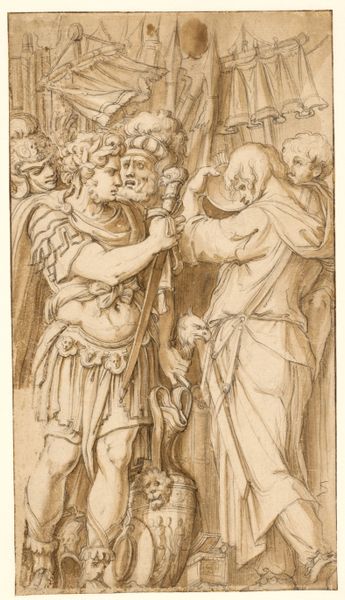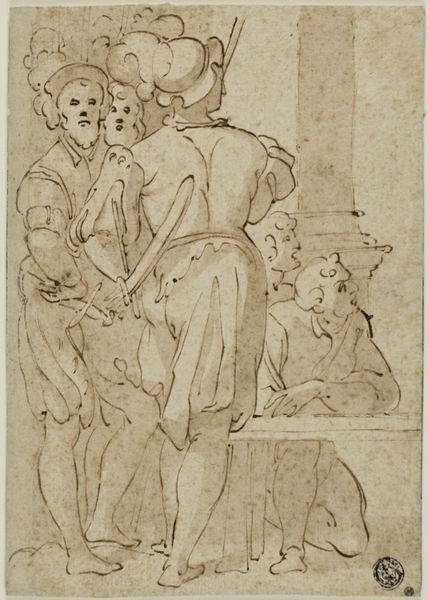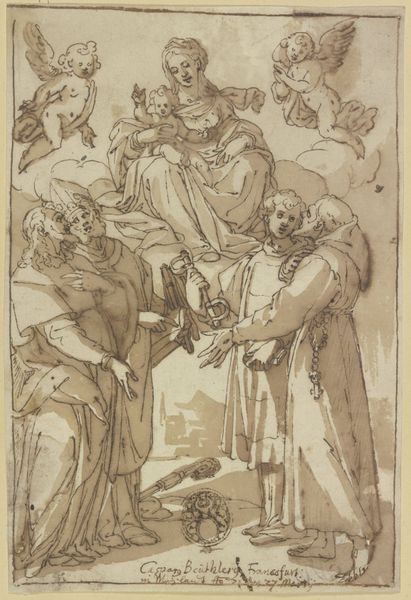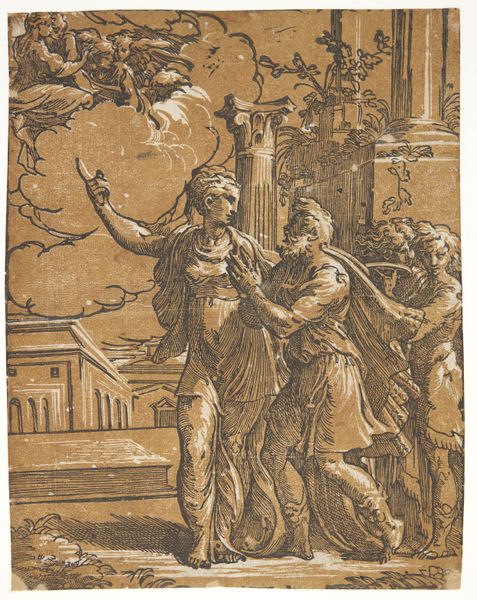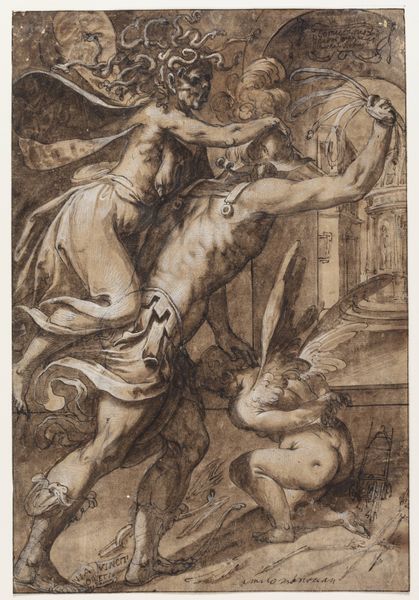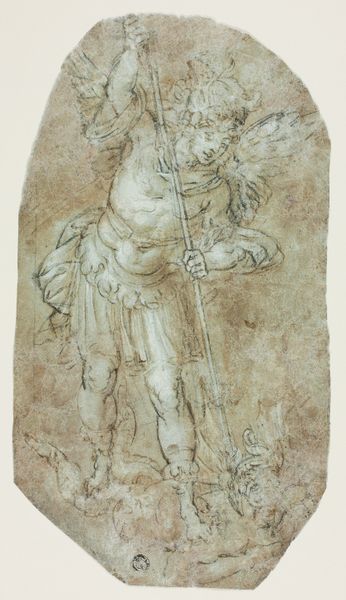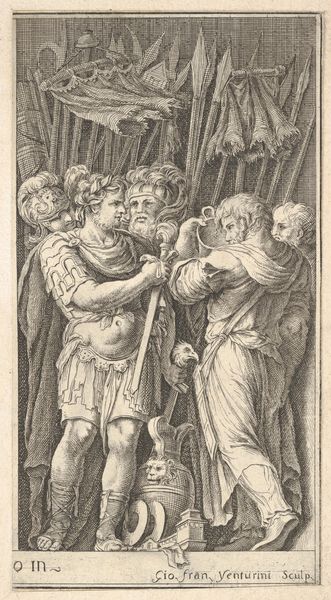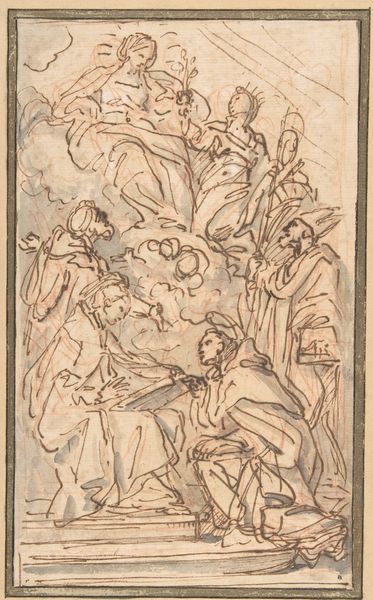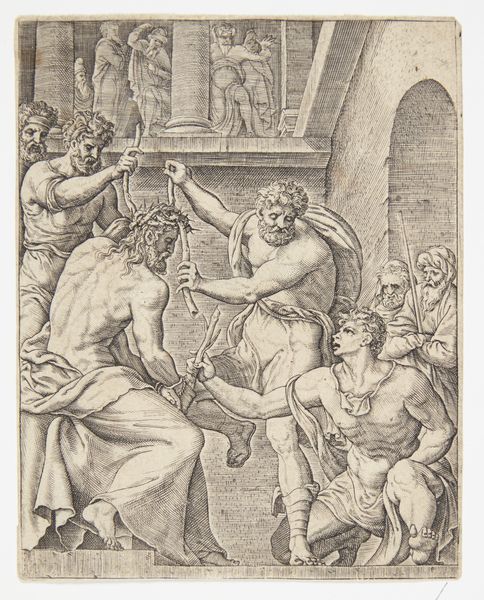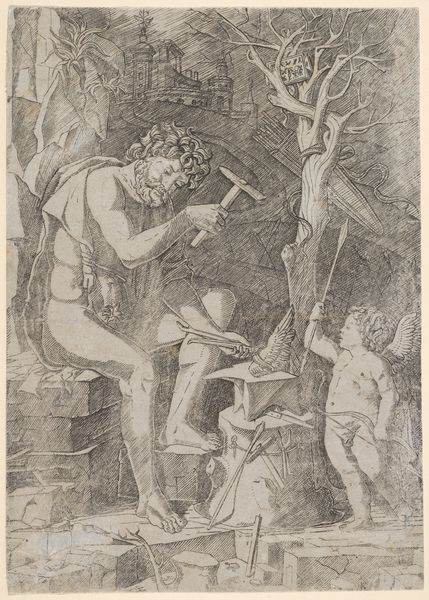
drawing
#
drawing
#
figuration
#
11_renaissance
#
pencil drawing
#
ancient-mediterranean
#
history-painting
#
academic-art
Dimensions: 430 mm (height) x 287 mm (width) (bladmaal)
Curator: Welcome. We’re standing before a drawing from between 1600 and 1700, currently held in the collection of the SMK, the Statens Museum for Kunst. It's titled "Scene from Roman History." Editor: My immediate reaction is a strong sense of muted grandeur. The limited palette forces you to focus on the figures and the dramatic composition. The materials suggest a study, but for what purpose? Curator: Well, considering its style aligning with academic art, we can assume it was a preparatory work. Academic art emphasized historical or mythological subjects, promoting moral narratives. Its likely purpose served as a sketch refining the composition, figures, and narrative before a more monumental painting. Editor: It’s interesting that you call it preparatory. To me, the paper itself speaks of value. It carries the marks, the history of the artist's hand laboring. Even the process itself adds to its aura of power! Do we know anything about the specific pigments employed, the paper's origins? Curator: Unfortunately, specific archival information about pigments and paper sources for anonymous works is difficult to come by. What stands out is the strategic use of classical themes—valor, authority, justice, all visualized through these figures lifted directly from Rome's visual vocabulary. This ensured that, even as a sketch, it tapped into established symbolic and emotional associations of the Roman past. Editor: Yes, but note how the textures, created through layered strokes of the pencil, define muscle, fabric. Think about how labor-intensive it was to achieve that level of anatomical rendering. Every line is deliberate, contributing to the hyper-realistic yet somewhat stiff presentation, but all rooted in a tactile reality, a physical exertion. Curator: Exactly. That controlled execution speaks directly to the social expectations and art institutions during that period. Skillful draftsmanship and the emulation of classical styles were fundamental to the role and reputation of the artist in society. And notice the composition, everyone pointing toward the same directions creates tension and draws the eye to a singular event, which, like I stated earlier, reinforces the narratives and morals that were vital back then. Editor: Agreed. Perhaps that focus on traditional forms made academic art seem out of touch. I wonder, how does revisiting these scenes challenge or affirm those power structures today? I’m finding this whole piece very interesting, thank you. Curator: Me too. Thank you for bringing up such an important viewpoint to this history, it's always wonderful how new perspectives change how we consider art.
Comments
No comments
Be the first to comment and join the conversation on the ultimate creative platform.
